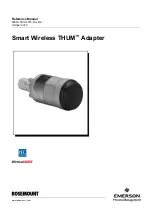
EDM01-36v10 DAG_9.2X2_Card_User_Guide - Using your DAG card
38
©2010 - 2012 Endace Technology Ltd. Confidential - Version 10 - May 2012
dagsnap
dagsnap
is a data capture software utility.
The following table lists all available options in
dagsnap
.
Note:
Not all options listed are applicable to all DAG cards.
Option
Description
-D, --delay <n>
Delay processing by an extra n milliseconds on each burst.
-d <device >,
--device <device >
Use the DAG device referred to by DEVICE. Supported syntax includes 0, dag1, and
/dev/dag3 to refer to DAG cards, and 0:2, dag1:0, and /dev/dag2:0 to refer to specific
streams on cards.
-D <n>, --delay <n>
Delay processing by an extra <n> milliseconds on each burst.
-h, -?,
--help, --usage
Display usage (help) information.
-j,
--maxwrite
Maximize disk writing performance by only writing data to disk in chunks. This option
may not be available on all operating systems. Supported in Linux only.
-m <mebibytes>,
--maxdata <mebibytes>
Write at most <mebibytes > megabytes of data per call to the DAG API (default is 4
MiB).
-o <filename>
--fname <filename>
Write the captured packets to <filename>, in ERF format (default is standard output).
-s <seconds>
--runtime <seconds>
Run for <seconds>, then exit.
-v
--verbose
Increase output verbosity. When
dagsnap
is run with this command three columns of
data are reported every second. These columns contain:
1. The cumulative total of data written out from the DAG card.
2. The buffer occupancy. Small values indicate no packet loss.
3. The rate at which data is currently being written.
-V, --version
Display version information.
-w,--wait
<waitseconds>
Delay(wait) in seconds before capture and after the stream is initialized
















































